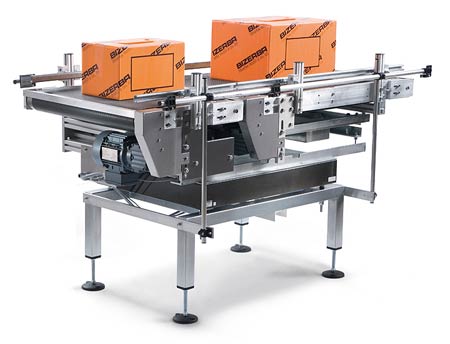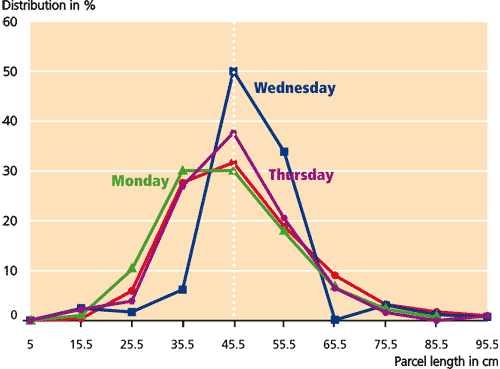- ... The dawn of a new era ...
... Pesa double in-motion scales DWL ...
The time factor plays a crucial role in logistics. In order to allow speedy yet at the same time economical transport, the collected packages must be assigned to their destinations as efficiently as possible in standardised processes. Depending on the package distribution curve and weighing belt combination, the Pesa DWL allows an increase in the throughput capacity of between 25 and 30%.

DWL double in-motion scales
No more unnecessary throughput limits
In the past, dynamic in-motion scales were the "bottleneck" in the conveyor systems of package sorting centres. For a long time, conveyor belt speeds of 3 m/s and a sorting capacity of 10 to 12,000 packages / hour seemed unattainable. The reason: The chaotic feeding of packages of different lengths (200 - 1200 mm) onto the scales.
Because it was necessary to use the package with the largest dimensions (L x W x H) for dimensioning the in-motion scales, and because only one package could be on the weighing belt at any one time in order to obtain an exact weight, large gaps resulted between the front edges when small packages were passing through. The consequence: The throughput per hour was reduced while the belt speed remained constant.
With two dynamic scales on the other hand, activated depending on the package length, it is possible to significantly reduce the gap between the packages. This is exactly the principle on which Pesa DWL scales work, with an upstream conveyor system allocating the packages depending on their length.

The distribution curve of the packages based on length (cm) and frequency (%) is an important indicator of a conveyor and sorting system's efficiency. It shows that with Pesa DWL scales, most of the packages can be weighed via the first weighing belt with a significantly smaller gap, with the remainder being weighed via the first and second weighing belt.